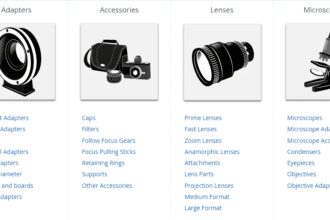
Until quite recently, consumer loans engaged in antiquated loan origination and authorization practices with a lengthy paper trail and elevated completion times. This frequently boosted costs and adversely affected the customer’s experience. The online mortgage application experience frequently pursued the very same motif as the offline equivalent. The end result was a superfluous and ineffective process, far from improved digital lending solutions.
Digital lending enables the integration of new information and data sources and modifies internal and client work processes for a friction-free mortgage experience for clients. The use of computing, interactive online applications, and video conversations provide the same advantages as face-to-face meetings and then add special value to the total client experience.
Impatient millennials are different in terms of customer principles and attitudes in comparison to the earlier generation. They are technologically knowledgeable and new-age companies need to capitalize on this relationship to improve their business. To stay at the top of the competition, mortgages have to adopt digital platforms and keep an eye out for ways to provide the customer with the best user experience.
Analytics Aided Data Collection
We have been found guilty of being a mobile-first age group with greater than half of online traffic being generated through digital device platforms. As a result, digital services encourage a more positive outcome and drive customer engagement. Customer Data that is loaded onto the platform can be smartly used by financial companies. Digital mortgaging also allows lenders to track and analyze spending habits and loan settlement schedules of other users on the platform.
Digital mortgaging understands the needs of the customer and in turn, provides a better user experience by tracking and improving the processes involved. Analytical aspects of the platform help to deliver a better customer experience at a small cost. Digital mortgages are able to collect data about the customer from the platform which also helps to improve the online journey.
Allows Customers to Self Service
Customers nowadays have become extremely self-reliant. Digital alternatives have created an atmosphere where it is now considered normal to get everything done yourself without having to seek unnecessary help from others. In spite of this, nearly all digital mortgage companies do not capitalize on self-service technical assistance or collaborative chatbots to respond to FAQs. They lead customers to either call-in customer service, go to the branch office or just give up on whatever it is they are trying to achieve.
Borrowers require more than only necessary information about the product as well as the ease of having to be able to perform transactions. They require responses in order to provide support to associated queries through content on multiple platforms. Permitting such self-service facilities helps enhance customer satisfaction levels, client maintenance, and improves conversion rates.
You can use online tools such as this mortgage payment calculator to estimate costs ahead of time.
Maintains Consistency Across All Touch Points
A multichannel experience is helping lenders to remain competitive in the customer experience game. However, new-age borrowers are proficiently banking online, through their mobile or tablet devices, and even accessing branch offices virtually. People who use digital mortgage services frequently switch back and forth between devices before finishing the activities carried out. Effective digital mortgage customer experiences are the ones that provide a genuinely smooth cross-channel experience.
Better Financial Technology
Mortgage companies frequently are finding themselves battling to abide by stringent regulations as well as meeting the customer’s request for on-the-go facilities. This moment in time is right for hooking up with technological advances so that lenders will be able to find excellent opportunities to enhance their consumer satisfaction. Incorporating mobile payment methods and improving the safety of a platform using biometrics, for example, voice recognition, eye scanning, and usage of eAsset for mortgage document storage are a few great examples of how digital technology can assist mortgage business in satisfying customers in various ways.
More Personalized Customer Experiences
Borrowers these days are spoilt for options when it comes to loan applications. Mortgage institutions need to create trust in borrowers to remain competitive. Personalization of messaging and services are making customers feel more appreciated, boosting their commitment. Marketing automated system tools like CRM structures come with lead tracking and strong email marketing abilities that can be personalized effectively to cater to various market segments.
Mortgage companies may also enable tailored connections based on customer interaction inclinations. Providing a customized experience to clients means giving them the opportunity to have access to the information they require instantly.








